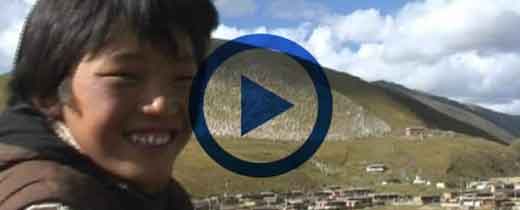Burang County, also known as “Purang County“, is located in the canyon on the south side of the Himalayas.
It has a mild climate and abundant precipitation. It is in the southern part of Ngari region.
Brief
It was formerly called “Spu rang stag la” which belonged to “Shangshung Kingdom” in ancient times. It was called “Burang” in Song Dynasty(960 AD-1279 AD) and Yuan Dynasty(AD 1271-AD 1368) and it was also called “Pulan” in Ming Dynasty(AD 1368 -AD 1644). After 1959, Burang Zong was changed to Burang County.
There are many explanations of the name of Burang, the most used is “Bu” means “snow” in Shangshung language (a branch of Tibetan language); “rang” means “mountain“, and “Burang” means “the place surrounded by snow mountains”
At the beginning of this Era, Burang was once one of the central jurisdictions of ancient “Shangshung Kingdom“. It was located at the junction of China, India, and Nepal, and it is the area with the most Nepalese in China
The total area of Burang County is 12,539 square kilometers, and the county seat is Burang Town. Burang County becomes popular for the sacred mountain Mt Kailash and the sacred lake Manasarovar. Every year, pilgrims from India, Nepal, and Bhutan come here for pilgrimage.
Burang has one “International Market” which specifically open for the merchants from Nepal and India. Due to the traffic and weather condition, this “International Market” is a seasonal and opens between July 15th and October 15th, which to be more exactly is to depend on the weather condition
Best time to travel
May to late June & September to October
Local climate
Plateau sub-frigid arid climate
Most popular sites
Kailash Mountain (Kangrinboqe), North of the sacred lake Manasarovar in Purang County, is the main peak of the Gangdise Mountains with an altitude of 6,656 meters; it means “mountain of gods” in Tibetan and it is the most sacred holy site of Tibetan Buddhism
Lake Manasarovar, 15 kilometers south from Hor village. The lake is 4587 meters above sea level, the depth of the lake is 77 meters, and the water area is more than 400 square kilometers. It is the highest freshwater lake in the world. In Buddhist scriptures, only one lake is called the “mother of the rivers of the world”, referring to Lake Manasarovar. The Tibetan language of Manasarovar is “the invincible lake”.
Jiwu Gonpa, also known as “Jiu Gonpa“, is located to the west of lake Manasarovar. Jiwu Gonpa is one of the 8 monasteries around Manasarovar , and also the starting point for people who make the cora of the holy lake. The temple is located on the top of the small hill and consists of two buildings. The one to the south is mainly the place for chanting and burning incense to worship, the one to the north is the place where the mani piles of various colors are neatly arranged, and there are also some Bull skulls with carved scriptures. The temple is in between the Lake Manasarovar and Lake Rakshastal (menaing “poisonous black lake”); Looking out from the Gonpa, the Lake Manasarovar is in the east, and a corner of Lake Rakshastal is visible, which is in the west;
Kejia Monastery, also known as “Khorja Monastery” is located in Kejia, is small, and it was built in 996 AD. It was originally Kadam pa, and later it was changed to Sakya pa. There is a manjusri bodhisattva statue in the temple. It is a national key cultural relics protection unit.
Qugu Gonpa, also known as “Choku Gonpa“, was built on the cliff which faces Mt Kailash. Because the main offering of this temple is Qugu (Choku) Buddha statue which the ultimate fruit-position dharma body formed by natural generation and practice, so that it is called Qugu Gompa. Qugu Buddha statues are still enshrined in this historic temple. In addition, the temple also enshrines the Sakyamuni, and Kangyur
Zhirepu Monastery, also known as “Drirapuk Monastery”, is at the southern foot of the Zhonglong (a place where wild yaks appear), which is right opposite to the north of Mt Kailash. This monastery was founded by Gotsangpa who the master of Kagyu pa.
Zunchuipu Monastery, also known as “Zutrulpuk Monastery”, is on the east of Mt Kailash by the Kailash cora trekking route. The main enshrined in the temple are the silver statues of Mirarepa, as well as the statues of Nyalalamba, the Supreme Rejongpa, the Great Achiever Zangpa Rey, the master Ngawang Lange, etc., as well as many scriptures, stupas and Highland-barley grains blessed by the master Zangba Rey.
Geography and climate
Burang County is 3900 meters above sea level. The topography of Burang County is particularly located in Peacock River (Majia Tsangpo) valley between Namu Na’ni Snow Peak and Api Peak, so it is called the “the place surrounded by snow mountains” of Ngari area.
Burang County is adjacent to Nepal and India, it is one of the border counties of Tibet Autonomous Region.
Its terrain is dominated by alpine meadows, mountain meadows, and mountain grasslands, with few shrubs. The soil is mainly alpine meadow soil, mountain meadow soil, etc., with high organic matter, nitrogen and potassium content.
Majia Tsangpo means “Peacock River” in Tibetan, it is in the northwest of the county and originates from the southwest of the Burang county, it flows out of the border from the southeast and enters Nepal. It is then renamed as “Ghaghara River”, merges into the Ganges, and finally flows into the Indian Ocean. The total length in China is 110 kilometers; the drainage area is 3020 square kilometers.
Burang County belongs to plateau sub-frigid arid climate zone, with sufficient sunshine, large daily temperature difference, relatively large annual temperature difference, low temperature and little precipitation.
Its annual average temperature is 3℃, the extreme maximum temperature is 26.5℃, the extreme minimum temperature is -27.5℃, the annual sunshine duration is about 3153 hours, annual frost period is 213 days, annual precipitation is 173 mm which 40% of it is concentrated in August
Population and ethnicity
As of 2014, the total population is 10,000. The main ethnic group is Tibetan, in addition, there are other ethnic groups including Chinese Han, Mogolian, Hui, Zhuang and Miao poeple
Recommended hotels
Eco Grand Hotel
Add: By county Park
Contact: +86 0 136-1897-4857
Himalaya Burang Hotel
Add: Shanxi Road
Contact: +86 897 2602888
Holy Mountain Wenqin Hotel
Add: Gongga Road
Contact: +86 0 157-0807-8226
Jin Yan An Hotel
Add: No. 2, Gongga Road
Contact: +86 897 2602959
Kou-An Hotel
Add: No. 13, Gongga Road
Contact: +86 897 2602222
Traffic Hotel
Add: No. 25, Gongga Road
Contact: +86 0 189-0898-8355
Distance from Burang to
- Darchen County : 105 kilometers, about 2 hours drive
- To Ali (Shiquanhe): 346 kilometers, about 6.5 hours drive
- Guge Kingdom: 333 kilometers, about 5 – 6 hours drive
- KunSha (Gunsa) Airport : 300 kilometers, about 5.5 hours drive
- Shigatse Peace Airport : 1,046 kilometers, about 17 hours drive
- Shigatse City : 999 kilometers, about 16 hours drive
- Lhasa City : 1,270 kilometers, about 21 hours drive




